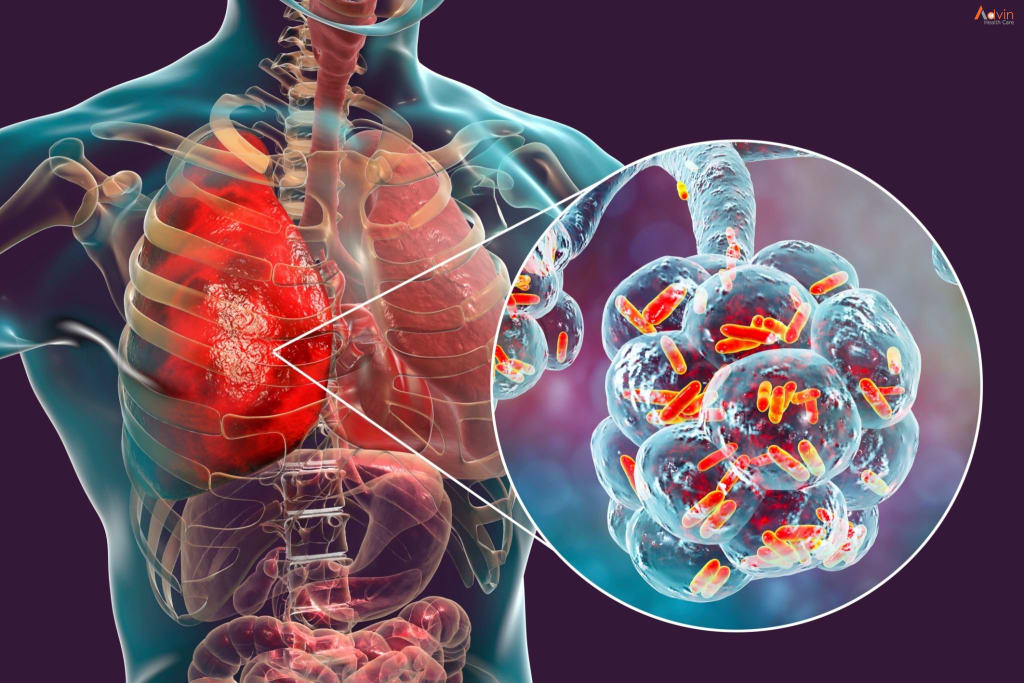Proactive Measures: Initiatives for Effective TB Control
Monitoring Progress and Evaluating Impact

Every day, 3,500 individuals worldwide lose their lives to tuberculosis (TB), and around 30,000 individuals become infected with TB bacilli, according to World Health Organization (WHO) estimates. India alone records 27% of global TB cases. This is jarring, given that TB is a detectable and curable disease and TB diagnosis and treatment protocols have been a part of existing health systems for a long time.
World TB Day, on March 24, commemorates Dr. Robert Koch's discovery of Mycobacterium tuberculosis (the bacteria that causes tuberculosis) in 1882. Despite its discovery then, possible treatments using streptomycin in 1943, and the discovery of antibiotics such as isoniazid and rifampicin during the 1950s and 1960s, the war against the pathogen is far from been won, and there are multiple challenges to be overcome in combating the disease.
India remains a TB hotspot. The TB control program in India has undergone several changes since its inception in 1962, incorporating evidence from various domains of public health and health systems, including pharmacology, microbiology, epidemiology, the social sciences, and information technology.
The theme for World TB Day 2024 (March 24), is 'Yes! We can end TB!', highlights the potential to eradicate TB with existing disease control mechanisms, infrastructure, training, and political will. Yet, TB in its various avatars — drug-resistant (DR-TB), totally drug-resistant (TDR-TB), extensively drug-resistant (XDR-TB), pulmonary TB (P-TB), and non-pulmonary TB — seep out, akin to trying to hold sand in one's hand, only to have it slip through one’s fingers.
We are in an era of hope where public health discourse has gained importance and technology has narrowed the gaps that were previously unimaginable. The COVID-19 pandemic, despite its disruptive and uncertain nature, has brought to the fore preventive aspects of public health, highlighting social determinants of health in the scheme of things. Despite the passage of World TB Day 2024, looking at rapid urbanization, migration, and the stresses on the existing health systems, Here is the proposed 10-point agenda towards 'ending TB'.
1. Early detection
Given TB's etiology, early detection is the key. Symptoms are often ignored and mistaken for other common ailments, leading to delays in reporting. Compulsory screening for family and contacts of each index case is essential, necessitating the accessibility of research centers and efficient follow-up mechanisms within health systems.
2. Exact treatment categorization
With increasing DR-TB, it is imperative to know the resistance status at the time of diagnosis to assign appropriate treatment regimens according to their phenotypic susceptibility.
3. Treatment adherence and follow-up
Unlike other bacterial disease, TB requires a long period of sustained treatment. Often, this leads to non-compliance, which could be due to improvement in health status, change of residence, or movement across States and districts. Even though the TB control program has a built-in follow-up system, compliance to complete treatment isn't 100 percent. Leveraging technology to monitor compliance needs focus.
4. Zero mortality
Mitigating mortality due to TB, be it DR-TB or non-pulmonary TB, is necessary.
5. Controlling drug resistance
Drug resistance in TB remains a man-made phenomenon. Unregulated use of antibiotics and non-compliance with treatment regimens lead to selective evolutionary pressure on the bacillus, thus resulting in developing drug resistance. Poor regulatory mechanisms for drug control and non-compliance with treatment regimens are the main reasons for such a high degree of drug resistance.
6. Assessing the extent of drug-resistant TB
There needs to be data on the proportion of people diagnosed with TB who have rifampicin-resistant TB (RR-TB) and multidrug-resistant TB (MDR-TB) — this is resistance to both rifampicin and isoniazid, collectively referred to as MDR/RR-TB. This helps in better planning and design of the control program, resource allocation for diagnosis, the treatment regime as well as the availability of trained staff mandated for DR-TB.
7. Availability of appropriate medicines
Assured medical supply is mandated under the TB control program. However, procurement challenges for DR-TB medications, such as bedaquiline and delamanid must be addressed, in addition to ascertaining treatment facilities for all DR-TB cases that require in-patient care.
8. Integration of intra-systems
Strengthening referral networks within and between different levels of public health systems and private health systems is vital to ensure no symptomatic cases are lost, no patients miss their dosages and are non-compliant, and, importantly, the screening of contacts for all positive cases of pulmonary TB cases (DR or non-DR).
9. Dynamic notification system
A robust notification system will ease the burden of healthy system personnel. While Ni-kshay has evolved — 'Ni-Kshay-(Ni=End, Kshay=TB) is the web-enabled patient management system for TB control under the National Tuberculosis Elimination Programme (NTEP)’ — it requires improvements to capture real-time TB data between sectors, practitioners, time, and locations.
10. Considering population mobility and migration
Frequently, the productive aspects of life are overlooked when discussing disease and healthcare seeking, particularly in the context of TB, which suffers from social and cultural stigma. Interestingly, once TB is diagnosed and positive cases are put on treatment, health is restored quickly for the patient to resume their daily activities. Therefore, the portability of TB treatment within the country is crucial at the policy level.
Let us pledge to create a TB-free India and world. With early diagnosis and continuous treatment accessible to all, we can achieve the goal of 'Yes! We have ended TB!'
About the Creator
shanmuga priya
I am passionate about writing.






Comments
There are no comments for this story
Be the first to respond and start the conversation.